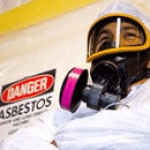Lead-based paint can deteriorate over time, releasing lead dust and particles into the environment. When disturbed during renovation, repair, or painting activities, lead dust can pose serious health risks if inhaled or ingested. To mitigate these risks, the EPA requires individuals and firms performing certain types of work on pre-1978 buildings to be certified in lead-safe work practices.
The EPA Lead Classes, also known as Lead Renovation, Repair, and Painting (RRP) courses, are designed to provide training on lead-safe work practices and regulatory requirements. These classes cover topics such as identifying lead-based paint, minimizing lead hazards, containment and cleanup procedures, and regulatory compliance. By completing an EPA Lead Class, participants gain the knowledge and skills necessary to perform lead-safe work and protect themselves, their clients, and the environment from lead exposure.
There are several types of Lead Paint Classes available, tailored to different roles and levels of involvement in lead-based paint activities:
Lead Renovator Initial Certification: This class is required for individuals performing renovation, repair, or painting work that disturbs lead-based paint in pre-1978 buildings. Participants learn about lead hazards, lead-safe work practices, and regulatory requirements, and upon successful completion, they receive certification valid for five years.
Lead Renovator Refresher Certification: For individuals who have already completed the initial certification, the refresher course provides updated information on lead-safe work practices, regulatory changes, and best practices for managing lead hazards. Refresher certification is required every five years to maintain compliance.
Lead Dust Sampling Technician: This class is designed for individuals who perform lead dust sampling in residential or child-occupied facilities to assess lead hazards. Participants learn sampling techniques, equipment operation, data interpretation, and reporting requirements to conduct lead dust clearance testing effectively.
Lead Abatement Worker: This class is intended for individuals involved in lead abatement activities, such as removing lead-based paint or lead-contaminated materials from surfaces or structures. Participants learn proper abatement techniques, containment methods, personal protective equipment (PPE) use, and waste disposal procedures to safely and effectively manage lead hazards.
Lead Abatement Supervisor: Building on the Lead Abatement Worker class, this course is designed for individuals who supervise or oversee lead abatement projects. Participants learn project management, regulatory compliance, worker safety, and quality control measures to ensure successful abatement outcomes.





Comments